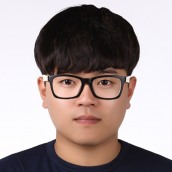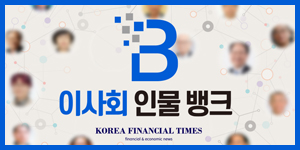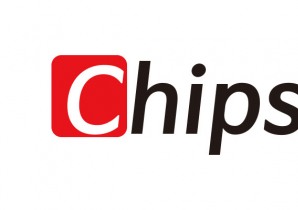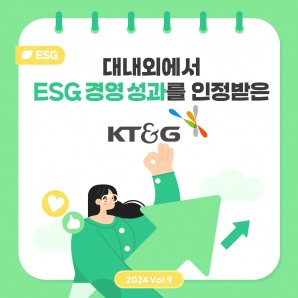With revisions to the Commercial Act focusing on enhancing shareholder rights, major Korean holding companies have recently seen their share prices rise sharply. POSCO Holdings (Chairman Chang In-hwa), however, had been left behind as weaknesses in its core steel business and sluggish battery materials segment weighed on its value.
According to the Korea Exchange, POSCO Holdings’ price-to-book (PBR) ratio is 0.45—well below the large holding company average of 1.2. A PBR below 1.0 suggests the share price is undervalued relative to the book value of assets, potentially making it attractive to investors.
In the first half of this year, POSCO Holdings missed out on the holding company rally that lifted Hanwha, Doosan, and LS by 250.5%, 157.3%, and 108.9%, respectively, from the start of the year through June. POSCO Holdings gained just 2.96%. Both the slow steel market and a slowdown in the battery business due to the so-called 'EV Chasm' (a temporary demand pause) weighed on results.
The company’s shares, however, began rising after the revised Commercial Act was passed on July 3. On that date, POSCO Holdings closed at KRW 312,000, up 7.99% for the session—the first time it breached the KRW 300,000 mark since March. Other holding companies that soared in H1, such as Hanwha, Doosan, and LS, all fell the same day. As of late July, POSCO Holdings was trading near KRW 330,000.
POSCO Holdings stands apart from other major holding companies in Korea as a widely held firm with no controlling shareholder. Its largest shareholder is the National Pension Service with an 8.5% stake. Global institutional investors hold around 5%, with the remainder spread across domestic institutions, foreign investors, and individuals.
As a result, POSCO Holdings is relatively unaffected by the revised Commercial Act—which expands directors’ fiduciary duties from solely the company to both the company and its shareholders, and limits the voting rights of the largest shareholder and related parties to 3% when appointing audit committee members—since these provisions primarily target companies with controlling shareholders.
Another factor prompting a revaluation of POSCO Holdings’ stock is its reputation as a model for advanced corporate governance among Korean conglomerates. Since 1997, well before privatization, POSCO introduced Korea’s first outside director system among chaebols.
After full privatization in 2000, POSCO established a system of management-led responsibility and modern corporate governance. In 2006, it was among the first to separate the CEO and chairperson of the board. In 2023, the company scrapped the preferential review procedure for reappointing the chairperson, enhancing fairness. Initiatives now mandated by law, such as electronic shareholder meetings and conversion of outside directors to independent directors, have already been implemented.
According to the POSCO Holdings Corporate Governance Report, the company achieved 100% compliance with key indicators in both 2023 and 2024—the only large conglomerate in Korea to do so. This has prompted market watchers to suggest that the recent reforms will further highlight POSCO Holdings’ advanced governance model.
POSCO Holdings has been implementing a mid-term dividend system since 2000 with the goal of maximizing shareholder value. In 2016, it became the first major Korean conglomerate to introduce a quarterly dividend system. Last year’s total dividend payout was KRW10,000 per share, unchanged from 2023. Despite a drop in consolidated net profit in 2024 (KRW1.095 trillion, down 35.5% year-on-year), dividend levels were maintained.
Brokerages have raised their target prices for POSCO Holdings to KRW 380,000 – 500,000, pointing to the low PBR as a catalyst for a rebound, especially as H2 approaches.
Lee Jae-man, an analyst at Hana Securities, noted, “Since July, institutional flows have concentrated on low-PBR stocks, and the long-short portfolio’s returns have reached 9.6% month-to-date—a remarkable rally. High-dividend, low-PBR names are now best placed for gains.”
In addition to Commercial Act reforms, stabilization in the steel business and the US Trump administration’s anticipated tariffs on China are also tailwinds for the company.
According to FnGuide, POSCO Holdings is expected to post consolidated revenue of KRW 71.6413 trillion, operating profit of KRW 2.6618 trillion, and net profit of KRW 1.5370 trillion for the year. While sales are forecast to fall 1.4% year-on-year, operating profit and net profit are set to jump by 22.4% and 62.1%, respectively.
This improvement is attributed to production cuts by China—the world’s top steel producer—and anti-dumping tariffs imposed in July on hot-rolled steel from China and Japan, lifting selling prices.
Kwon Ji-woo, an analyst at Hanwha Investment & Securities, commented, “The anti-dumping measures on Chinese hot-rolled steel, combined with China’s own output cuts, should support a recovery in steel sales volume and prices in the second half, offering a chance for a valuation rerating.”
Battery materials are also back in the spotlight as the US Trump administration is expected to finalize a 93.5% tariff on natural graphite anode material from China on December 5, which—combined with existing tariffs—will raise the total to about 160%. The move aims to eliminate China from US electric vehicle battery supply chains.
POSCO Holdings subsidiary POSCO Future M is accelerating localization of materials from raw input to finished battery components. It has expanded its natural graphite supply network to Africa and Australia, and recently invested KRW 400 billion to bring spherical graphite production onshore, eliminating reliance on China.
It has also achieved localization of precursor materials, the core ingredient for cathodes. In June, POSCO Future M completed a plant in Gwangyang with output capacity equivalent to 500,000 EV batteries per year, all of which will supply cathodes for LG Energy Solution and General Motors’ Ultium Cells joint venture in North America.
Lee Jin-myung, an analyst at Shinhan Investment & Securities, said, “POSCO Future M is the only domestic supplier of anode materials capable of serving North American demand and is building out a China-free supply chain for cathodes, too. Its proactive investment and vertical integration strategy are beginning to yield tangible results.”
Kim JaeHun (rlqm93@fntimes.com)
































![강남구 ‘디에이치자이개포’ 24평, 5개월 만에 4.3억 상승한 33억원에 거래 [아파트 신고가]](https://cfnimage.commutil.kr/phpwas/restmb_setimgmake.php?pp=006&w=69&h=45&m=5&simg=2025061908193804321e41d7fc6c2183101242202.jpg&nmt=18)
![양천구 ‘목동센트럴아이파크위브’ 33평, 5.8억 내린 8.5억원에 거래 [이 주의 하락아파트]](https://cfnimage.commutil.kr/phpwas/restmb_setimgmake.php?pp=006&w=69&h=45&m=5&simg=2023032209572705070b372994c951191922428.jpg&nmt=18)
















![[카드뉴스] KT&G, 제조 부문 명장 선발, 기술 리더 중심 본원적 경쟁력 강화](https://cfnimage.commutil.kr/phpwas/restmb_setimgmake.php?pp=006&w=298&h=298&m=1&simg=202509241142445913de68fcbb3512411124362_0.png&nmt=18)
![[카드뉴스] KT&G ‘Global Jr. Committee’, 조직문화 혁신 방안 제언](https://cfnimage.commutil.kr/phpwas/restmb_setimgmake.php?pp=006&w=298&h=298&m=1&simg=202503261121571288de68fcbb3512411124362_0.png&nmt=18)


![[카드뉴스] 국립생태원과 함께 환경보호 활동 강화하는 KT&G](https://cfnimage.commutil.kr/phpwas/restmb_setimgmake.php?pp=006&w=298&h=298&m=1&simg=202403221529138957c1c16452b0175114235199_0.png&nmt=18)
![[신간] 고수의 M&A 바이블](https://cfnimage.commutil.kr/phpwas/restmb_setimgmake.php?pp=006&w=81&h=123&m=5&simg=2025091008414900330f8caa4a5ce12411124362.jpg&nmt=18)
![[신간] 리빌딩 코리아 - 피크 코리아 극복을 위한 생산성 주도 성장 전략](https://cfnimage.commutil.kr/phpwas/restmb_setimgmake.php?pp=006&w=81&h=123&m=5&simg=2025032814555807705f8caa4a5ce12411124362.jpg&nmt=18)
![[서평] 추세 매매의 대가들...추세추종 투자전략의 대가 14인 인터뷰](https://cfnimage.commutil.kr/phpwas/restmb_setimgmake.php?pp=006&w=81&h=123&m=5&simg=2023102410444004986c1c16452b0175114235199.jpg&nmt=18)

![[신간] 조금 느려도 괜찮아...느림 속에서 발견한 마음의 빛깔](https://cfnimage.commutil.kr/phpwas/restmb_setimgmake.php?pp=006&w=81&h=123&m=5&simg=20251105082239062852a735e27af12411124362.jpg&nmt=18)

![[AD] 기아 ‘PV5’, 최대 적재중량 1회 충전 693km 주행 기네스 신기록](https://cfnimage.commutil.kr/phpwas/restmb_setimgmake.php?pp=006&w=89&h=45&m=1&simg=20251105115215067287492587736121125197123.jpg&nmt=18)
![[카드뉴스] KT&G, 제조 부문 명장 선발, 기술 리더 중심 본원적 경쟁력 강화](https://cfnimage.commutil.kr/phpwas/restmb_setimgmake.php?pp=006&w=89&h=45&m=1&simg=202509241142445913de68fcbb3512411124362_0.png&nmt=18)
![[AD]‘황금연휴에 즐기세요’ 기아, ‘미리 추석 페스타’ 이벤트 실시](https://cfnimage.commutil.kr/phpwas/restmb_setimgmake.php?pp=006&w=89&h=45&m=1&simg=20250903093618029117492587736121166140186.jpg&nmt=18)
![[AD]‘패밀리카 선두 주자’ 기아, ‘The 2026 카니발’ 출시](https://cfnimage.commutil.kr/phpwas/restmb_setimgmake.php?pp=006&w=89&h=45&m=1&simg=2025081810452407346749258773621116810840.jpg&nmt=18)
![[AD] ‘상품성↑가격↓’ 현대차, 2025년형 ‘아이오닉 5’·‘코나 일렉트릭’ 출시](https://cfnimage.commutil.kr/phpwas/restmb_setimgmake.php?pp=006&w=89&h=45&m=1&simg=202505131018360969274925877362115218260.jpg&nmt=18)



